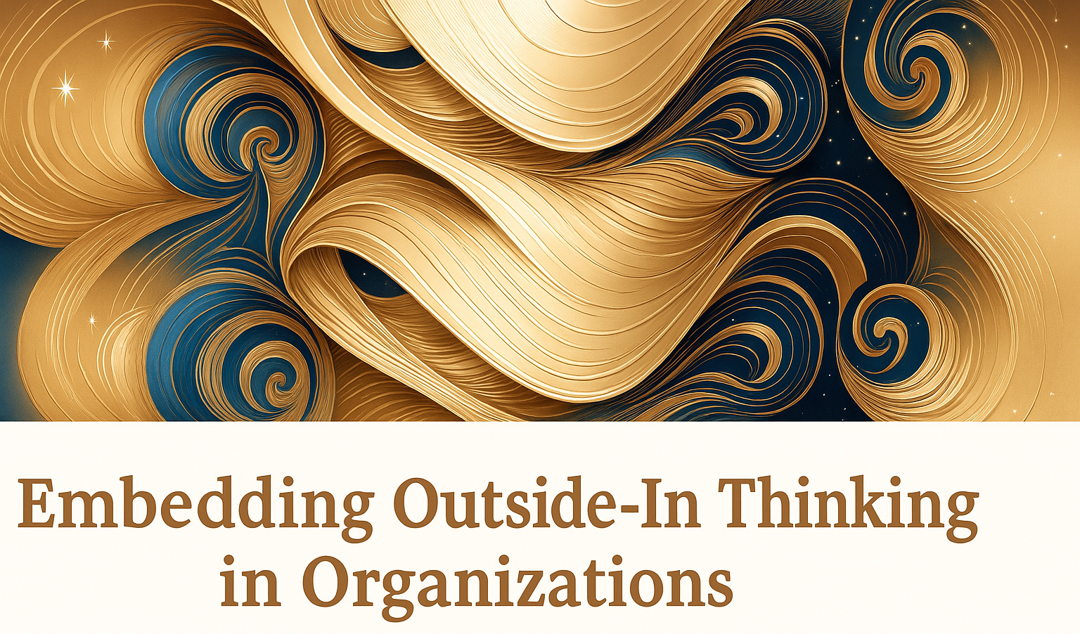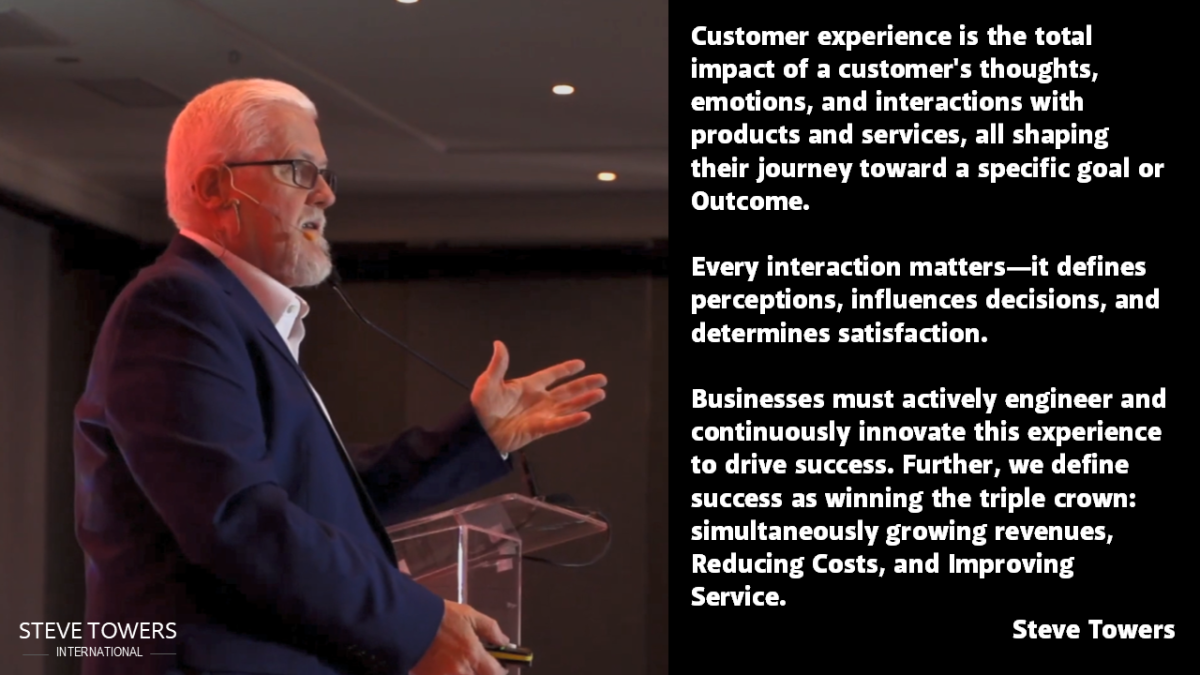If you want to do more than just talk outside-in, you need to start re-wiring how your team or organisation defines success, measures progress and governs day-to-day activity. These are the three steps to build Outside-In practice into any organisation using the CEMMethod™ playbook.
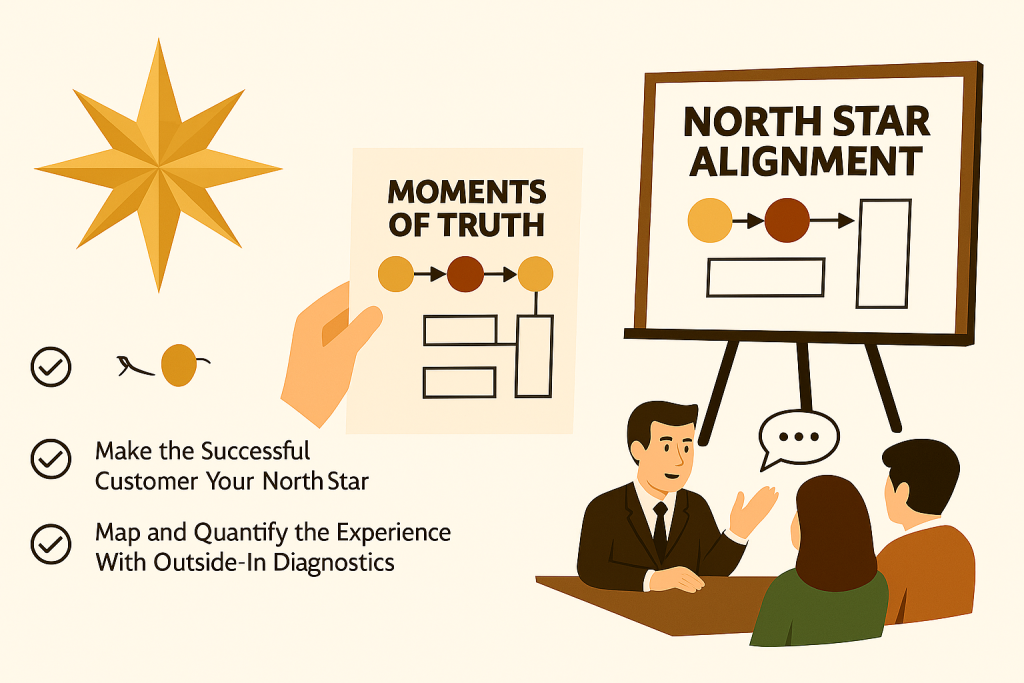
1. Make the Successful Customer Outcome Your North Star
Every activity has to link back to and improve the outcome your customer is trying to get.
If you use the Successful Customer Outcome (SCO) as your North Star, you’ll have a lens through which to see which projects are valuable, which activities are counter-productive and what your priorities should be. Additionally, publishing a visible SCO on a board in your office serves as a constant reminder to keep the customer at the centre of everything you do.
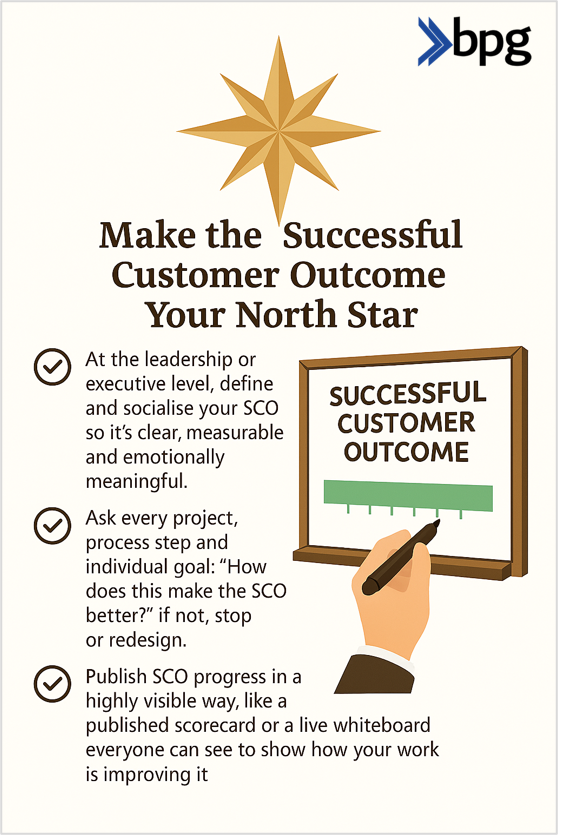
– At the leadership or executive level, define and socialise your SCO so it’s clear, measurable and emotionally meaningful.
– Ask every project, process step and individual goal: “How does this make the SCO better?” If not, stop or redesign.
– Publish SCO progress in an obvious way, like a published scorecard or a live whiteboard everyone can see to show how your work is improving it.
2. Map and Quantify the Experience With Outside-In Diagnostics
First you need to see the customer experience and quantify the gap to your ideal in order to know what to fix.
The CEMMethod™ diagnostic tools, such as Moments of Truth (MOT) mapping, Causal Flow diagrams, the Customer Performance Landscape, and the Disruption Factor metric, provide a comprehensive end-to-end view.
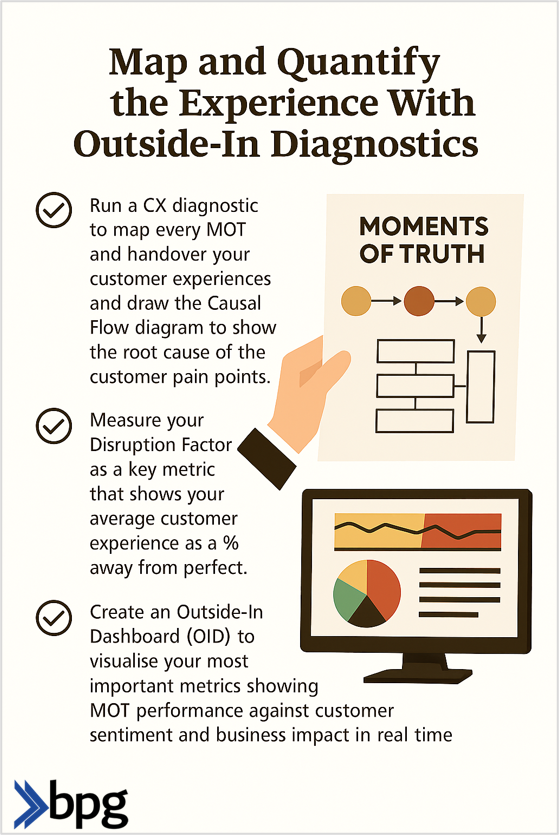
– Run a CX diagnostic to map every MOT and handover your customer experiences and draw the Causal Flow diagram to show the root cause of the customer pain points.
– Measure your Disruption Factor as a key metric that shows your average customer experience as a % away from perfect.
– Create an Outside-In Dashboard (OID) to visualise your most essential metrics showing MOT performance against customer sentiment and business impact in real time.
3. Embed Outside-In Into Culture Through Governance and Alignment
Outside-In isn’t a project. It’s a new way of operating that has to become habitual to have an impact.
The key is to have North Star alignment tools (metrics that roll up to the SCO), regular governance forums for leaders to review MOT performance and to experiment with new ways of working such as innovation sprints.
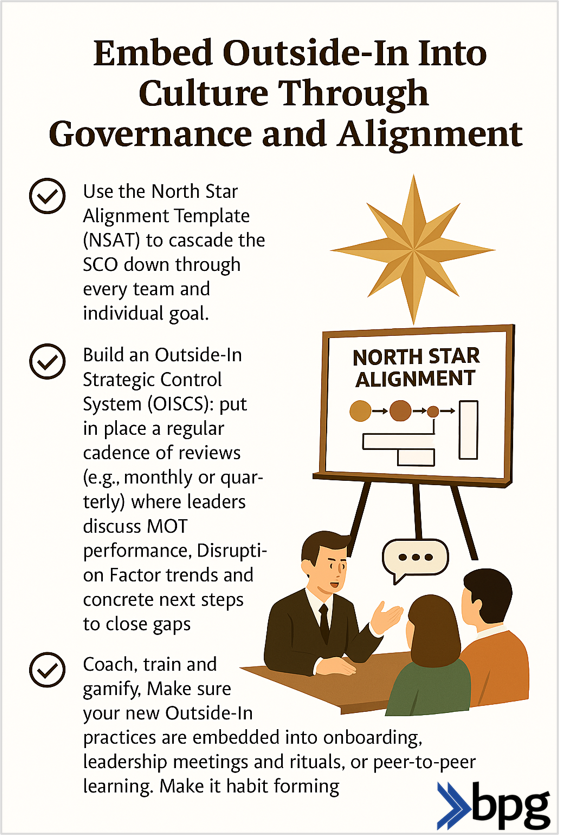
– Use the North Star Alignment Template (NSAT) to cascade the SCO down through every team and individual goal.
– Build an Outside-In Strategic Control System (OISCS): put in place a regular cadence of reviews (e.g. monthly or quarterly) where leaders discuss MOT performance, Disruption Factor trends and concrete next steps to close gaps.
– Coach, train and gamify. Make sure your new Outside-In practices are embedded into onboarding, leadership meetings and rituals, or peer-to-peer learning. Make it habit forming.
More steps as Outside-In momentum builds
As you get these basics in place and start to see traction, then there are a few more levers to accelerate your Outside-In journey:
– Bring your Outside-In metrics into your digital backbone by integrating with your Experience Manager, BI tool or other platforms to make your data flow easily.
– Ensure every leadership meeting includes a real customer story to make the data human.
– Experiment with Six-Step Innovation to run rapid-cycle innovation sprints that co-create future-state experiences with customers in real time.
The additional gears of technology, story and rapid innovation give you more propulsion on your journey from good to great and will help turn customer centricity from aspiration to every day reality.
You can explore the CEMMethod here: https://www.cemmethod.com
Become professionally qualified in the use of the approach: https://www.bpgroup.org
(Live, online, or in the room – London – Dubai – Denver – Johannesburg)
Do connect here on LinkedIn or visit https://stevetowers.com
Definitions
What is a Moment of Truth?
A Moment of Truth is any interaction with the customer within the Customer Experience, first discussed in my 1993 book ‘Business Process Reengineering – A Senior Executive’s Guide‘
Moments of Truth are the cause of all work.
This understanding underpins the CEMMethod, first launched in 2006 and now in version 15. It is the idea that all work an organization undertakes is, at a fundamental level, caused by Moments of Truth. In principle, everything a company does can and should be linked to a Moment of Truth.
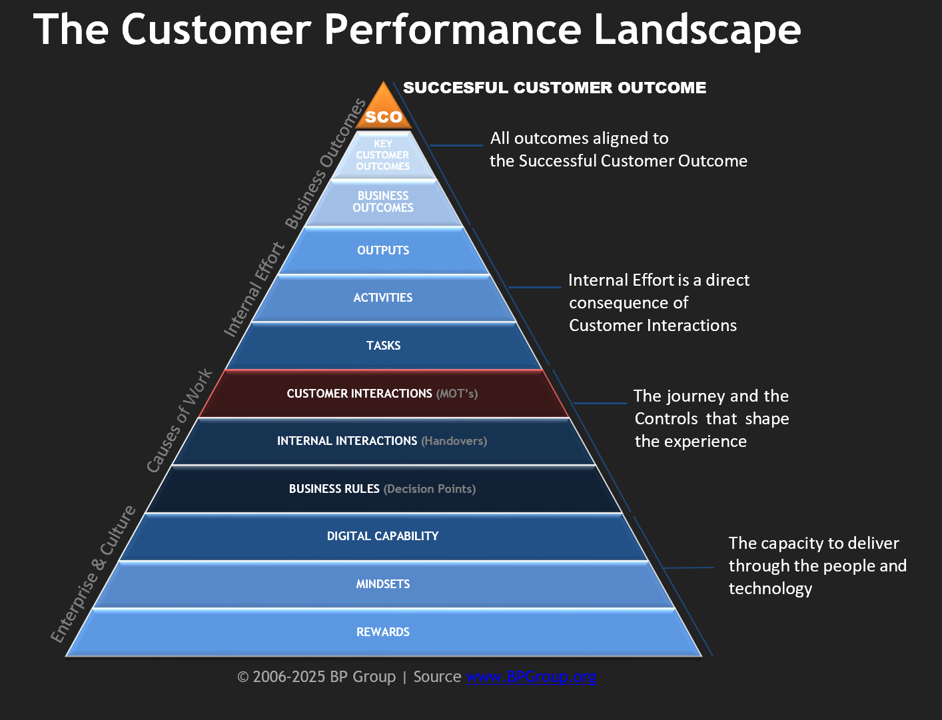
Managing Moments of Truth
Enlightened ‘Outside-In’ organizations actively embrace Moment of Truth Management as an essential strategic and operational necessity to deliver engineered Customer Experiences. How so?
a. Designing for Moments of Truth – The Design-Implementation Gap
Early efforts were geared around designing optimal Moments of Truth, however, simply mapping customer journeys has never been enough. It is one thing agreeing on what a future state customer journey should be, it is entirely another implementing it. This Design-Implementation gap is precisely what kills the majority of Customer Experience initiatives.
b. Implementing optimized Moments of Truth
Successful deployment of innovated Moments of Truth is key to delivering optimal Customer Experiences. The most practical immediate results are focused on rapid roll out across a key experience and using the success of that to validate rolling out smoothly across the organization. Establishing ownership, accountability, metrics, controls and improvement paths are part of this discipline.
c. Operationalizing Moments of Truth
Once Moments of Truth have been designed, innovated and implemented into recrafted customer experiences they need to be actively managed ‘in the moment’ and shared. Every Moment of Truth should feed to a corporate dashboard, with real-time data showing the performance of that MOT and its associated experiences. If things go wrong, the owner should be able to ‘course correct’ and real-time monitor the customer experience delivery.
Imagine a world without customer satisfaction surveys, no need for Net Promoter Scores, no focus groups, and no mystery shopping because you will know how 100% of interactions are performing 100% of the time.
Control and Action combined
The C suite and leaders will now have a clear line of sight into every corner of the organization and across the enterprise landscape REAL TIME. One version of the data truth (and not all those departmental/divisional versions of reality).
The need for retrospective action evaporates. Immediate and laser-focused control can be maintained delivering simultaneously enhanced service, lower costs, higher revenues, improved compliance and uber motivated employees.
What’s next?
In my next piece, I will demonstrate how this can be done immediately. If you can’t wait for that, ping me and let’s talk the how, now
MOT primer…
Steve Towers
https://www.linkedin.com/in/stevetowers/
Richard Normann – creator of the Moments of Truth concept:
https://en.wikipedia.org/wiki/Richard_Normann
Jan Carlzon – author of ‘Moments of Truth’
https://en.wikipedia.org/wiki/Jan_Carlzon
Moments of Truth 2025 (VIDEO)
https://youtu.be/3mzz_LdgmFY
That Kodak Moment of Truth
https://www.processexcellencenetwork.com/innovation/columns/4-lessons-from-the-kodak-moment-of-truth
Mitch Belsley – Get Scientific about Managing Moments of Truth
http://customerthink.com/get-scientific-about-managing-moments-of-truth/
Accreditation & Certification in CX and Process
https://www.bpgroup.org

